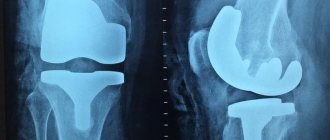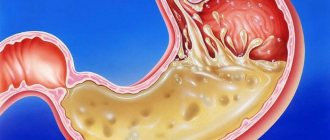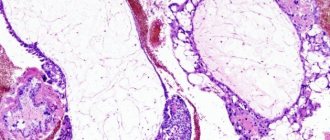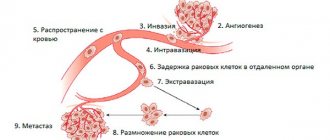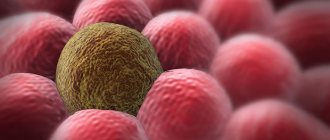Chemotherapy is scary and unbearable. The media space tells us this, and it is not surprising that due to such hyperbolization, many patients fear it almost more than the disease itself. However, not a single film or novel tells what it is, how it works and how justified the fear of drug treatment is. Together with Maria Stepanova, a chemotherapist at the Luch clinic and a research fellow at the St. Petersburg State Medical Center, St. Petersburg Medical Center (o), we compiled instructions for patients and figured out what drug therapy is and what the treatment regimen depends on.
Types of chemotherapy
- monochemotherapy - treatment with one drug;
- Polychemotherapy is treatment with several drugs at the same time.
Complex combinations of several chemotherapy drugs are used more often today, as they are more effective.
Chemotherapy is often used as part of a combination treatment for cancer:
- neoadjuvant - carried out before radical treatment;
- adjuvant - prescribed after surgery.
Chemotherapy: types by coloring of medications
Medicines used in chemotherapy are divided according to the color of their components.
Taking this into account, the following types of chemotherapy can be distinguished:
- The red version is the most aggressive and toxic to the body. Injected drugs of the antacycline subgroup can cause a decrease in immune barriers and anti-infective protection. A properly selected treatment regimen destroys malignant cells and prevents their further reproduction and spread. Breaks between courses are required so that the patient’s body is cleansed of toxins and restored.
- The yellow version is the most gentle anti-cancer drugs, easier to tolerate by patients. After their administration, the patient’s body requires less time to recover.
- The white version is based on medications such as Taxol or Tacosel.
To increase the effectiveness of treatment courses, doctors usually recommend polychemotherapy in combination with other methods.
If we talk about the drugs used in the Onco.Rehab clinic, it should be noted that at the end of 2021, the purchase of original drugs amounted to more than 80% (in financial terms). Among them:
- Vemurafenib (Zelboraf)
- Dabrafenib (Tafinlar) + Trametinib (Mekinist)
- Lenvatinib (Lenvima)
- Lapatinib (Tyverb)
- Abiraterone
- Axitinib
- Vandetanib
- Vismodegib
- Crizotinib
- Olaparib
- Enzalutamide
- Osimertinib
- Sunitinib
- Trastuzumab
- Pertuzumab
- Regorafenib
- Sorafenib
- Everolimus
- Ceritinib
- Nintedanib
- Palbociclib
- Ribociclib
Doses and regimens of use of anticancer drugs
Antitumor drugs and their dosage are selected strictly individually.
Each drug has its own characteristics and features. When conducting chemotherapy, the following parameters are important:
- drug dose
- mode and method of its administration
- interval between injections
- complications associated with its use.
The dose of the drug is calculated based on the chemotherapy regimen, height, weight, age, condition of the patient, and in some cases, based on the patient’s laboratory parameters.
Cancer is the most insidious disease in the world with millions of deaths annually.
Oncological diseases are a whole group of pathologies that are characterized by the formation of cancer cells that destroy the immune system and completely destroy the body.
Cancer diseases are one of the most insidious diseases in the world: every year they claim the lives of millions of people of different sexes and ages. That is why the entire global medical community is working to resolve issues related to the development of effective cancer treatment regimens. Scientists around the world are engaged in continuous scientific activity, during which new drugs are created and effective methods of cancer treatment are developed, one of which is chemotherapy for cancer. At the moment, one of the most reliable methods of treating cancer is chemotherapy, which is selected individually, depending on the characteristics of the specific tumor and the patient’s health status. The term “ cancer chemotherapy ” in medicine refers to the use of cytostatic drugs that penetrate the cells of a malignant tumor and destroy their structures.
With the advent of cytostatic drugs in oncological medicine, a real breakthrough occurred: courses of chemotherapy for cancer help to significantly slow down the rate of division of pathogenic cells and minimize the growth of tumors. In the initial stages, chemotherapy together with surgery can help completely destroy the source of pathology, and if the disease is in an advanced state, cytostatics can slow down the development of the disease and prolong the patient’s life as much as possible.
How effective chemotherapy is for cancer should be judged by the specific type of oncology: there are types of malignant tumors that are treated exclusively with cytostatic drugs and their combination. For many years in oncological medicine, chemotherapy has been considered one of the most effective and efficient methods of cancer treatment.
Modes
If it is necessary to increase the intensity of chemotherapy, then increase the dose of the drug, this is the so-called high-dose therapy , or shorten the interval between chemotherapy courses, that is, introduce compacted regimens.
There are also metronomic regimens for the use of cytostatic drugs, when small doses of drugs are administered, but continuously for a long time.
After each course of chemotherapy treatment, a certain break is required to restore the body . As a rule, repeated courses of chemotherapy are carried out every three to four weeks, this is the period during which the indicators of leukocytes, platelets, etc. are restored.
When using some chemotherapy drugs, for example, nitroso derivatives, this interval increases to 6 weeks.
The duration of treatment and the number of courses of chemotherapy depend on the type of tumor, the characteristics of the disease, and how the body responds to treatment. Sometimes it becomes necessary to stop or change treatment, and this decision is made by the attending physician.
Fears about chemotherapy for cancer
Many patients at oncology clinics are afraid of treatment with cytostatics, because the side effects after chemotherapy can be quite severe:
- increased body temperature;
- nausea, vomiting;
- hair fall and loss;
- chills and muscle pain;
- weakness and dizziness;
- gastrointestinal disorders;
- loss of appetite;
- depression, panic attacks;
- increased drowsiness.
Intensive chemotherapy for cancer –
This is a serious burden on the cardiovascular and circulatory systems. However, you should not be afraid of serious side effects: the chemotherapist prescribes maintenance treatment, which helps to recover as quickly as possible after a course of treatment with cytostatics.
Before undergoing chemotherapy in a hospital, patients are prescribed a list of examinations with the obligatory completion of a detailed blood test and biochemistry. Chemotherapy negatively affects the blood count, therefore, during courses of treatment with cytostatic drugs, patients repeatedly check the condition of the blood and heart muscle (tests, ECG).
An experienced chemotherapist, in parallel with prescribing chemotherapy, recommends drugs to support the body, which reduce the number and frequency of side effects.
Remember, chemotherapy is one of the leading methods of healing from cancer throughout the world!
The life expectancy of most patients who refuse treatment rarely exceeds 1 year.
Methods of using chemotherapy drugs
- Systemic chemotherapy Drugs are administered orally (orally), subcutaneously, intravenously, intramuscularly, or rectally. Systemic chemotherapy involves affecting the entire body.
- Regional chemotherapy refers to the effect of a cytostatic drug in elevated concentrations on the tumor mass with the limitation of its entry into other organs by injection into the vessels feeding the tumor (for example, in melanoma).
- Local chemotherapy Drugs in the form of ointments or solutions are applied to superficial tumor foci (skin ulcers), injected into the serous cavities (ascites, pleurisy), the spinal canal (intrathecally) for damage to the meninges, and intravesically for bladder tumors.
How is chemotherapy administered for cancer?
The patient can receive chemotherapy while in the clinic, at home, or in a day hospital setting (without staying in the clinic overnight). Regardless of where a patient receives treatment, their healthcare provider will monitor and help manage adverse reactions.
There are many ways to administer chemotherapy. Among them, the most common are:
- Oral. The drug is available in the form of tablets, capsules or liquids for internal use.
- Intravenously. The drug is introduced into the body through a vein.
- Injection. Injected into the muscle of the arm or thigh, or subcutaneously into the fat layer of the arm, leg or abdomen.
- Intrathecal. The chemotherapy is injected into the space between the layers of tissue that cover the brain and spinal cord.
Intravenous administration of the drug
- Intraperitoneal (intraperitoneal). Chemotherapy is injected into the abdominal cavity, where organs such as the intestines, stomach or liver are located.
- Intra-arterial. The drug is injected directly into the artery that leads to the tumor.
- Externally. The chemotherapy drug comes in the form of a cream that is rubbed into the skin.
Most often, chemotherapy is given intravenously using a thin needle that is inserted into a vein in the arm. The nurse inserts it at the beginning and removes it at the end of each procedure. In addition, intravenous chemotherapy can be given through catheters or ports, sometimes with the help of a pump.
- A catheter is a thin, soft tube. The doctor or nurse places one end of the catheter into a large vein, often in the chest area. The other end is equipped with a system for connecting a syringe.
- The port is a small, round disc that is placed under the skin through minor surgery. The surgeon places it at the beginning of treatment and it remains there until treatment is completed. We recommend using this device for long-term, multiple infusions.
- Pumps are often attached to catheters or ports. They control the amount and rate of delivery of chemotherapy drugs, which makes it possible to receive chemotherapy outside the clinic. Pumps can be internal or external. In our practice we use pumps and infusion pumps.
! It is important that sterile conditions are maintained in the area where the drug is administered.
Rules for the administration of antitumor drugs
The most widely used is intravenous administration of antitumor drugs. In this case, the doctor must take into account the individual characteristics of the patients’ veins.
- the administration of antitumor drugs should be performed only in departments specializing in cytotoxic chemotherapy;
- nurses must undergo special training to perform work with cytostatics;
- it is necessary to observe the sequence and speed of drug administration, take into account the chemical properties of drugs when using equipment for their administration;
- comply with the rules and shelf life of drugs, both in pharmaceutical packaging and after their preparation;
- You cannot mix drugs “in one bottle” unless there are special instructions for this in the instructions for use of these drugs.
- the preparation of injection solutions must be carried out in a sterile box;
- needles, syringes, vials, ampoules and remnants of unused drugs must be destroyed;
- butterfly needles should not be used for infusion of chemotherapy drugs that have a blister effect; it is preferable to use peripheral catheters of the “brownull” type;
- for vesicant drugs with a long infusion period (12 hours or more), it is preferable to use central venous access—installation of a port system.
Goals and evaluation of the effectiveness of drug treatment
There are three types of drug therapy: preoperative (neoadjuvant), prophylactic (adjuvant) and palliative (maintenance).
— How is treatment carried out in each case?
— Let's start with preoperative drug therapy. For example, a patient is admitted to the department with a diagnosis of stomach cancer. CT results show that there are no distant metastatic foci, however, due to the spread of the primary tumor, surgery at the first stage is impossible. In this case, treatment looks like this: four courses of therapy, then surgery, and after that another four courses of adjuvant therapy. Why else? Formally, the tumor was removed, but there is a risk of the tumor returning, and adjuvant therapy helps to delay it.
The doctor chooses palliative therapy when surgical methods are powerless (for example, with distant metastases to the lungs, liver, lymph nodes, etc.). Treatment is then primarily aimed at maintaining the patient's quality of life and controlling the disease, and the duration of treatment depends on its effect. In chemotherapy, doctors use RECIST 1.1, a system of criteria for assessing tumor response to therapy, and in immunotherapy, irRECIST.
“I’ll explain how this works, using the example of a patient with a colon tumor and multiple metastases in the liver and lungs. To assess the severity of the situation, we conduct an examination, identify the most measurable lesions and administer two to three cycles of chemotherapy. Most chemotherapy courses involve drug administration. There are 14-21 days between the first injection and the second, and this time period is called a cycle.
Next we look and compare. If the tumor has decreased by more than 30%, this is a partial response, and therapy should be continued for up to six courses. If she leaves, this is a complete regression, and we also add four courses to consolidate the result. If the tumor has increased or decreased by 20%, this means stabilization, we do two more courses and look again: if the situation has not changed, the patient goes on a chemotherapy holiday until the disease progresses, and then the regimen is repeated.
But if the tumor has grown by more than 20% during treatment, we are dealing with progression; most likely, this tells us about the aggressiveness of the tumor. In this case, I explain to the patient what is happening to him and why we are changing treatment.
— How to persuade a patient to undergo treatment?
— Everyone needs an individual approach. I always say: “Chemotherapy may worsen your condition, but you should not be afraid of this - we will try to select the optimal symptomatic therapy that will reduce adverse events.” If after this, during treatment, evidence of poor tolerability appears, we will think about reducing the dose of the cytostatic. There are times when I literally talk a patient into going to therapy and explain to him what we are fighting for. And I explain this regardless of the seriousness of the case - if with an aggressive tumor a person is determined to fight to the last, it is my duty to give him this opportunity.
Interviewed by Daria Semeina
Implantable port systems
An implantable port system is a catheter installed in a vessel or cavity and connected to a reservoir-chamber. The port-catheter system has been widely used in medicine for more than 30 years.
Port systems help to undergo treatment more effectively, safely and efficiently. Their installation as a vascular access device is especially relevant for patients who are prescribed long-term treatment, in case of complications during chemotherapy that have led to difficulty in venous access.
In this case, the patient can receive therapy both in a hospital setting and on an outpatient basis.
Infusion of drugs is carried out using special Huber-type needles, which, by puncturing the silicone membrane of the port, allow the infusion solution to be introduced into the reservoir without damaging the silicone membrane. Next, the drug enters the bloodstream or cavity through the catheter, depending on the type of port system and the location of the catheter.
The port system is completely hidden under the skin. Therefore, it is suitable for long-term use, does not burden the patient and does not interfere with hygiene procedures. It must be remembered that when not in use, the port system must be washed at least once every 2 months.
Adjuvant and neoadjuvant chemotherapy for oncology
Answering the question: “What is chemotherapy for cancer ?” –
we should consider its main types, which are used in global oncological practice to prevent the development of cancer.
Chemotherapy oncologists distinguish the following types of chemotherapy treatment:
- adjuvant chemotherapy;
- neoadjuvant chemotherapy;
- curative chemotherapy.
Each type of chemotherapy has its own goals and objectives, so the selection of treatment is carried out based on each specific clinical case. Thus, adjuvant chemotherapy for cancer is recommended for patients, depending on the morphology of the tumor and the stage of the disease, who have undergone surgery to remove tumors. The goal of such therapy is to reduce the risk of disease progression - the appearance of new metastases, as well as to prevent relapses of the disease.
Thus, it is obvious what chemotherapy for oncology gives in this case: reducing the risk of re-development of the pathology, which is so feared by both the patients themselves and oncologists, whose arsenal does not always have effective methods of treating even more dangerous and fleeting recurrent cancer.
In addition, patients are often prescribed neoadjuvant chemotherapy for cancer, which is carried out before surgical treatment of the tumor. The purpose of such “chemistry” is to reduce the size of an inoperable tumor or, for example, to perform an organ-preserving operation, as well as to identify the sensitivity of cancer cells to medications that will be used in the postoperative period.
In addition, there is also curative chemotherapy, which is prescribed as maintenance therapy for patients at advanced stages of the oncological process. In this case, the effect of chemotherapy on the body is to slow down the spread of the tumor and maximize the quality of life of patients suffering from cancer.
In oncological practice, combination treatment regimens are often used, in the process of compiling which chemotherapists combine the above types of chemotherapy for cancer in order to increase the effectiveness of treatment. Thus, neoadjuvant chemotherapy is often prescribed before surgery, and adjuvant chemotherapy after.
The answer to the question of whether chemotherapy helps with cancer at stage 4 is quite complex, but most experts are confident that the lack of supportive treatment can lead to severe pain, complications associated with the spread of the tumor to neighboring tissues and organs, and premature death patient.
Preparing for chemotherapy
Chemotherapy is a treatment with poisons, so before carrying out therapy, the doctor requires a large list of tests and examinations to be performed to monitor the functioning of various organs and choose a treatment regimen. It is advisable, even before starting chemotherapy, to undergo a course of treatment for all chronic foci of infection: caries, chronic gastritis and others.
To avoid problems with finding veins and installing a catheter, it is advisable to drink 1.5-2 liters of liquid the day before chemotherapy.
To train the veins, it is recommended to periodically squeeze the wrist expander for 10 minutes 3 times a day or until tired. In this case, the hand should hang below the level of the heart.
On the day of chemotherapy, you need to keep your hands warm; you can apply warm wraps to the injection sites. You can periodically clean your hands with warm towels.
Chemotherapy results: what modern cytostatics can do
To find out whether chemotherapy helps cancer, simply compare the patient's test results before and after treatment. In most cases, after chemotherapy, the tumor significantly decreases in size or even disappears completely. Even if oncology cannot be cured completely, during treatment with cytostatics it can simply “freeze” and not bother the patient at all for many years.
The results of treatment will largely depend on how the intervals between courses are observed, as well as on the timely examination, since as the disease progresses, it is necessary to change the treatment regimen. Even in cases of complete hopelessness, the effectiveness of chemotherapy for oncology is quite high: these drugs improve the quality of life and prolong it as much as possible.
If cancer is detected in the early stages, there is a very high chance of complete recovery with the help of chemotherapy. With chemotherapy, it is extremely important to determine what course of chemotherapy, how many courses, what treatment intervals, what duration of treatment, because incomplete treatment can contribute to the rapid growth of cancer cells that cannot be controlled.
Regardless of how many days of chemotherapy for cancer and what the initial prognosis of the disease was, patients receive the opportunity for complete or partial healing, pain reduction, and most importantly, hope for recovery. Do not neglect the advice of oncologists and strictly follow the developed treatment regimen, and then you will get the maximum chance of healing, as well as a long and fulfilling life!
While undergoing chemotherapy
On the day of chemotherapy, you need to have breakfast in the morning.
Next, you need to follow a few simple rules:
- Proper nutrition during chemotherapy will help preserve and restore the body's own defense mechanisms. There is no need to follow a special diet. It is advisable to reduce the amount of fried, fatty, smoked, salty foods in order to relieve the load on the main detoxification organ - the liver. During chemotherapy, it is recommended to reduce alcohol consumption; it is a hepatotoxic poison and can enhance the toxic effect of cytostatics.
- Drinking regimen is important : you need to drink at least 1.5 - 2 liters of liquid per day, but no more, otherwise the load on the kidneys may increase and swelling may appear.
- The skin partly takes on the function of removing cytostatics, so it is important to shower in the morning and evening .
- Maintain oral hygiene : in the morning and evening, carefully brush your teeth with a brush with soft bristles to avoid unnecessary trauma to the gums.
- Watch the chair . It should be daily or at least every other day. If there is slight stool retention, you can cope with it by adjusting your diet. Constipation is a side effect of antiemetic drugs given before chemotherapy. It is possible to use laxatives, but very carefully. It is better to use hypertensive microenemas (pharmacy) or classical methods of solving this problem (classical enemas, suppositories with glycerin). Candles made from soap should not be used. They cause a chemical burn to the rectal mucosa!
- Nausea and vomiting may accompany the chemotherapy process throughout its entire duration. Most often this is a concern in the first days of administration of cytostatics. To reduce nausea and vomiting, it is possible to use antiemetics - animetics. Such as cerucal, ondansetron, zofran, kitril, emeset. Take 1 tablet every 5-6 hours. As a rule, 3 - 4 tablets per day are more than enough. Nausea should not be tolerated, at least in the first few days. It definitely needs to be reduced. This is important for maintaining appetite.
- Unfortunately, hair follicles are also affected by cytostatics. Hair becomes weak and may fall out. This phenomenon is temporary and after chemotherapy ends they will grow and become even thicker.
- The lifestyle of a patient receiving chemotherapy should not change radically. It is necessary to walk, go on picnics, work, meet friends, relax in the country, swim, play sports.
- When taking certain medications, the so-called “ hand-foot syndrome ” may develop, when redness, swelling and even cracks occur on the skin of the palms and soles. You can make baths for your hands and feet with cool water. It is better to avoid warm and hot water. Do not walk barefoot, protect your hands with gloves when doing housework. After washing, the skin should be blotted dry, but not rubbed. All exposed skin should be protected from sunlight when outside the home. Regular use of moisturizing creams and ointments containing panthenol is recommended.
Read about complications after chemotherapy here.
Chemotherapy
Chemotherapy is one of the main treatment methods in oncology. The mechanisms of action of chemotherapy drugs vary, but they all boil down to one principle: the drugs damage and destroy rapidly multiplying cancer cells.
Since chemotherapy drugs are most often administered intravenously, they spread throughout the body and attack not only tumor cells, but also healthy, actively dividing cells, in particular in hair follicles, red bone marrow, and mucous membranes (mouth, digestive tract, reproductive system). This causes side effects. Some chemotherapy drugs can damage cells of the heart, kidneys, bladder, nervous system, and lungs.
If a patient is about to undergo chemotherapy, they are likely to worry about serious side effects.
Here's what you need to know about it:
- There is no reliable way to predict how the body will respond to chemotherapy. Some patients have almost no side effects, while others have very severe side effects.
- There is a rule in oncology: the dose of chemotherapy should be high enough to effectively kill cancer cells, but low enough to cause minimal side effects.
- The doctor always looks for the “golden mean”.
- Over the past 20 years, doctors have learned to effectively prevent and treat many of the side effects of chemotherapy drugs.
Maintenance therapy helps you endure chemotherapy comfortably. This is important because reducing the dose or stopping chemotherapy reduces the chances of successful treatment and increases the risk of relapse. Doctors at our medical center know how to keep side effects under control.
WHAT ARE THE BENEFITS OF CHEMOTHERAPY?
Malignant tumors tend to spread their cells throughout the body due to the friability of their structure.
The cells are washed out by tissue fluid, enter the lymph and blood, and then into any part of the body, into any organ or bone. There they settle and give rise to secondary tumor foci - metastases. Modern diagnostic methods make it possible to identify metastases in lymph nodes and organs, but identifying cancer cells during their migration is quite difficult.
Chemotherapy drugs introduced into the blood spread throughout the body and, when they reach cancer cells, block them. It is this generalized effect that is their advantage, allowing them to block the spread of metastases and act on existing foci in various organs.
HOW DO CHEMICAL DRUGS WORK?
Modern chemotherapy drugs are combined into groups that differ in their mechanism of action on the tumor. However, almost all of them have an effect at the level of the genetic structures of the cell - they damage the DNA chain. As a result, a recoding of the cellular program occurs, and a process is set that is the opposite of cell development and reproduction, which is called apoptosis. That is, the cells are incapable of further division and are on the verge of death.
In addition to this main effect, there are other mechanisms, of which there are many - on cell membranes, on enzymes, on the development of blood vessels, and so on. Each group of drugs has its own “specialization”. This is the basis for their combined use. Cells brought to a state of apoptosis are “achieved” by other drugs that affect metabolic processes, the membrane, and blood vessels.
WHAT CHEMICAL DRUGS ARE USED IN ONCOLOGY?
The modern arsenal of chemotherapy drugs for the treatment of cancer is divided into many groups, differing in the mechanism of action on the cancer cell.
There are the following main groups of cytostatics:
- alkylating drugs - contain special alkyl hydrocarbons, which, when attached to the DNA of a cancer cell, block its ability to divide (cyclophosphamide, sarcolysine, embiquin, benzotef);
- alkaloids are nitrogen compounds with an alkaline reaction, obtained from plants; they have a toxic effect on cancer cells, inhibit their development, mainly due to changes in pH (vincristine, vinblastine, etoposide, paclitaxel);
- antimetabolites - substances that inhibit metabolic processes (metabolism) in cancer cells (methotrexate, xeloda, decitabine, 5-fluorouracil);
- antitumor antibiotics (doxorubicin, bleomycin, mitamicin, dactinomycin);
- podophyllotoxins - drugs obtained from the mandrake plant, and their semi-synthetic analogues - epipodophyllotoxins, which inhibit cell division (podophyllin, etoposide, teniposide, condyline);
- platinum preparations - contain toxic platinum salts that inhibit metabolic processes and damage DNA (platinum, cisplatin, phenanthriplatin, paraplatinum);
- other drugs - enzyme inhibitors and others (Velcade, Gleevec, Sutent, Poglucar, etc.).
The arsenal of chemotherapy drugs is constantly being replenished, with both new types and new methods of administration appearing.
WHO IS CHEMOTHERAPY TREATMENT FOR CANCER AND WHO IS CONTRAINDICATED?
Before prescribing a course of chemotherapy treatment, the doctor takes into account many factors: the nature and stage of the cancer, its degree of malignancy, sensitivity to certain chemotherapy drugs, the prognosis of the disease and, of course, the general health of the patient, his age.
Chemotherapy is prescribed in the following cases:
- For blood cancer (leukemia, lymphoma, multiple myeloma) - as the main method of treatment;
- For various types of cancer for the prevention of metastases as an additional method - for lung cancer, breast cancer, prostate cancer, ovarian cancer, esophageal cancer, colorectal cancer and other organs;
- To reduce the growth and size of the tumor before surgery in order to transfer it to an operable state (non-adjuvant chemotherapy);
- After surgery to remove the tumor to destroy any remaining cancer cells (adjuvant chemotherapy);
- As the main palliative treatment method in the case of an inoperable tumor, to reduce its growth and prolong the patient’s life;
- Before undergoing a bone marrow transplant.
Chemotherapy is not prescribed when it does not make sense and can only harm the patient’s health in the following cases:
- With metastases in the liver with severe impairment of its function, high levels of bilirubin;
- With metastases to the brain;
- In case of severe cancer intoxication and the patient’s serious condition;
- With cancer cachexia (exhaustion).
The issue of indications for chemotherapy in oncology is decided by a council.
What are the benefits of chemotherapy? Malignant tumors tend to spread their cells throughout the body due to the friability of their structure.
The cells are washed out by tissue fluid, enter the lymph and blood, and then into any part of the body, into any organ or bone. There they settle and give rise to secondary tumor foci - metastases. Modern diagnostic methods make it possible to identify metastases in lymph nodes and organs, but identifying cancer cells during their migration is quite difficult.
Chemotherapy drugs introduced into the blood spread throughout the body and, when they reach cancer cells, block them. It is this generalized effect that is their advantage, allowing them to block the spread of metastases and act on existing foci in various organs.
How do chemotherapy drugs work? Modern chemotherapy drugs are combined into groups that differ in their mechanism of action on the tumor. However, almost all of them have an effect at the level of the genetic structures of the cell - they damage the DNA chain. As a result, a recoding of the cellular program occurs, and a process is set that is the opposite of cell development and reproduction, which is called apoptosis. That is, the cells are incapable of further division and are on the verge of death.
In addition to this main effect, there are other mechanisms, of which there are many - on cell membranes, on enzymes, on the development of blood vessels, and so on. Each group of drugs has its own “specialization”. This is the basis for their combined use. Cells brought to a state of apoptosis are “achieved” by other drugs that affect metabolic processes, the membrane, and blood vessels.
Who is indicated and who is contraindicated for cancer treatment with chemotherapy? Before prescribing a course of chemotherapy treatment, the doctor takes into account many factors: the nature and stage of the cancer, its degree of malignancy, sensitivity to certain chemotherapy drugs, the prognosis of the disease and, of course, the general health of the patient, his age.
What methods are used for chemotherapy?
The administration of chemotherapy drugs in oncology is carried out using several methods:
- oral – in the form of capsules and tablets;
- intravenous – directly into the blood;
- regional – to the tumor zone: selective intravascular, intracavitary.
Tablet drugs are usually prescribed on an outpatient basis for a maintenance course of treatment.
The main one is the injection method - injection into the blood, when the entire dose of the drug enters the body and affects not only the tumor, but also all organs where the formation of metastases is possible. It can be performed either in a hospital or on an outpatient basis. And in order to avoid daily injections, the patient is given an intravenous catheter, it is connected to a pump, which doses and periodically injects the medicine into the vein.
Modern chemotherapy is not as toxic as it was ten years ago. New drugs can have a more pronounced effect on cancer cells than on healthy ones. Their combined use, the optimal choice of combination and sequence, plus drug “cover-up” minimize complications and make them not life-threatening.
And yet side effects still occur, they are:
- feeling of nausea, sometimes vomiting;
- deterioration of the condition of the skin, hair, nails, thinning and hair loss, but not all modern drugs cause such trouble;
- decreased immunity, susceptibility to colds, associated with inhibition of bone marrow function and the formation of leukocytes;
- anemia, manifested by pale skin, dizziness, general weakness, is associated with a decrease in the number of red blood cells and oxygen starvation.
All these phenomena are temporary, transitory. Usually the doctor prescribes remedies to help avoid them or eliminate them faster. The patient needs good nutrition and long walks in the fresh air.
RECOVERY TREATMENT AFTER CHEMOTHERAPY
Restoring the body after chemotherapy is an important stage in the fight against cancer, without which the body will not be able to cope with the load. If you do not pay proper attention to it, the patient will not only experience a lot of unpleasant complications, but also be at risk of relapse.
Nausea and vomiting The most common complaint among patients undergoing chemotherapy is nausea and vomiting. This is due to the high toxicity of the drugs, as well as their effect on the mucous membrane of the gastrointestinal tract, liver and vomiting center in the brain.
The more the patient fears the appearance of these symptoms, the less able to control attacks of nausea, the greater the likelihood of feeling unwell during treatment. In addition, female gender, young age, pathology of the liver and brain, alcohol abuse during treatment, as well as disturbances of water and electrolyte metabolism, which often accompany cancer, are considered unfavorable factors. The dosage of the administered substance also plays a role: the higher it is, the more likely the development of nausea and vomiting.
Modern chemotherapeutic agents have a less pronounced emetogenic (vomiting-inducing) effect than those that were used 10-15 years ago, and the ability to take highly effective antiemetic drugs throughout treatment gives the patient a chance to avoid painful symptoms altogether.
What to do in case of nausea and vomiting? First of all, if any changes in your well-being occur, you need to tell your doctor about it, because choosing an effective drug for nausea and vomiting can be difficult; an individual approach and even the “trial and error” method are important here.
Directly on the days of chemotherapy and throughout the treatment, you need to follow simple rules:
The food consumed should not be plentiful and have an irritating effect. It is necessary to exclude fatty, fried, spicy and salty foods, giving preference to broths, cereals, fruit juices and purees.
You should drink more liquid in the form of water, tea, juice, but it is better to take small sips and often, because drinking a large volume can cause vomiting. If the patient is concerned about swelling or impaired kidney function, the doctor will determine the drinking regime.
Immediately after the administration of chemotherapy drugs, it is better not to eat or drink at all, but before the procedure, it is possible to take food or water if the patient wants it and tolerates it well.
In cases where even the smell of individual components of cooking food causes discomfort to the patient, it is better to involve relatives in preparing the food.
You need to take antiemetic drugs even when there is no nausea, according to the regimen prescribed by your doctor. Among the agents used are cerucal, ondansetron, motilium and others.
Hair loss, skin and nail changes Hair loss and deterioration of the skin and nails are common during chemotherapy. In women, these signs can cause serious psychological discomfort, even depression, since the appearance does not change for the better, and others easily notice the negative consequences of treatment. Men may suffer less psychologically from these side effects, but patients of both sexes must take care of themselves during therapy.
Hair loss often accompanies chemotherapy, but not all drugs cause it. Since the cells of the hair follicles are constantly dividing and renewing, they become very vulnerable during treatment. Hair thinning, thinning, and in some cases complete baldness are possible, and not only the head, but also other hair-covered areas of the body suffer.
Hair loss begins 2-3 weeks after the start of treatment, and after its completion it grows back. Of course, baldness does not pose any threat to life or health, but the problem is quite pressing for most patients, especially women, for whom appearance and hairstyle are very important. In addition to personal worries about changes in appearance, patients also experience discomfort from excessive attention from others, because hair loss more often than other signs indicates a cancerous tumor.
What to do if you have hair loss?
- You should carefully wash your hair with a mild shampoo, dry it carefully, avoiding damage, and do not overuse blow-drying.
- If your hair has already begun to fall out, it is recommended to cut it short or shave your head (carefully!).
- In case of baldness, you should wear a scarf or cap that will protect the vulnerable scalp from external influences.
- You need to think about the need to wear a wig in advance, even before the hair falls out, so that its color matches the patient’s hair color.
- As practice shows, in many cases the speed and intensity of baldness depends on hair care even before the start of chemotherapy.
- Hair restoration will begin 2-3 months after the end of treatment, it may even change color or structure, but after some time everything will return to normal.
Along with hair, nails also experience the negative effects of chemotherapy, which begin to flake, break, and change color. To prevent such phenomena, you need to carefully monitor their condition, avoid manicures, do housework with gloves, and medicine can offer a local cooling method, which reduces the toxic effect of treatment on the fingers by narrowing the capillaries and slowing down the blood flow.
The skin is a well-renewed organ, so it often suffers during chemotherapy. Possible itching, redness, thinning of the skin, and pain. Proper skin care involves careful washing without a washcloth, using special creams and lotions, and sunscreen when going outside. Clothes should be made from natural fabrics, loose and comfortable.
Dysfunction of the gastrointestinal tract The mucous membrane of the stomach and intestines is constantly renewed, its cells are dividing intensively, therefore, during chemotherapy, various disturbances of these processes quite often occur, accompanied by diarrhea, constipation, and changes in appetite.
A decrease in appetite or a change in the taste of familiar foods is not uncommon, and for the patient, proper nutrition plays a very important role during chemotherapy, because weight loss, a lack of vitamins and microelements can further worsen the condition of the body, which is already weakened by the tumor. It is important to know the rules that will help cope with the negative manifestations of treatment and provide the patient with an adequate food and drinking regime:
You should eat food more often and in small portions, avoiding overeating, and it is better to give preference to high-calorie dishes. Dairy products, sweets, low-fat meat and fish, vegetables and fruits are completely acceptable and even healthy.
You cannot limit fluid intake if there is no kidney pathology or severe edema. Good juices, fruit drinks, jelly, tea.
To improve appetite, it is recommended to walk more often, move more, try new foods and diversify the menu in all available ways, but taking precautions and a reasonable approach when choosing food.
If there is a tendency to constipation, then increasing the amount of fiber and fluid in your diet will help cope with the problem. Bran, whole grains, dried fruits, vegetables and fresh fruits are beneficial.
If you have diarrhea, you should avoid fatty foods, alcohol and drinks containing caffeine. Light transparent broths, porridges, bananas and applesauce, rice, and white bread croutons are preferred. Diseases such as cancer of the intestines, stomach, esophagus, pancreas, and liver are accompanied by significant digestive disorders in themselves, so chemotherapy requires special caution, and additional nutritional recommendations will be given by the attending physician.
The effect of chemotherapy on reproductive function Since chemotherapy can disrupt the development of the fetus, it is better to avoid childbearing during treatment. Women should visit a gynecologist regularly and use contraception. Men should also be careful because chemotherapy causes damage to sperm and therefore may cause birth defects in the baby. In addition, semen may contain chemotherapy drugs, therefore, to avoid their irritating effect on the mucous membranes of the partner’s genital tract, you should always use a condom.
Blood test during chemotherapy The bone marrow is continuously renewed, producing more and more leukocytes, platelets, red blood cells, which ensure the delivery of oxygen to the tissues, immunity, and stopping bleeding. Chemotherapy, which affects continuously dividing cells, almost always affects the bone marrow, and patients suffer from anemia (anemia), decreased immune defense against infections, and bleeding.
A blood test after chemotherapy is characterized by a decrease in the number of red blood cells, leukocytes and platelets, that is, cells of all bone marrow sprouts. Patients experience weakness, dizziness, and are prone to infections and bleeding.
For this purpose, in the day hospital of our Center, special schemes for restorative treatment and correction of the rheological properties of blood are used.
WHAT ARE THE MOST DANGEROUS COMPLICATIONS AFTER CHEMOTHERAPY?
Firstly, these are changes in the blood count: anemia with a decrease in the level of red blood cells and hemoglobin, leukopenia, blood clotting disorders can be considered a reason for further treatment of the patient.
Secondly, the toxic effect of chemotherapy on the liver, kidneys, heart, and brain can lead to disruption of their function both during and after chemotherapy. Finally, serious mental disorders, including severe depression and even psychosis, lead many cancer patients to see a psychotherapist.
Treatment after chemotherapy for the disorders described above may require:
- Prescription of iron-containing drugs, vitamins, microelements, red blood cell transfusions for anemia.
- Transfusions of platelets, plasma preparations for bleeding or administration of anticoagulants for increased blood clotting and susceptibility to thrombosis.
- Carrying out antimicrobial therapy in case of immunodeficiency and infectious complications, as well as placing the patient in sterile conditions in severe cases.
- In case of liver dysfunction, detoxification therapy and plasmapheresis are prescribed, and in case of kidney pathology, hemosorption and hemodialysis are prescribed.
- For depression, psychosis, and suicidal thoughts (which often happens in cancer patients), the help of a psychotherapist or psycho-oncologist is necessary (in specialized oncology clinics).
Good pain relief is also important, especially in patients with metastases, for whom chemotherapy was administered not for the purpose of a complete cure, but to alleviate the painful symptoms of cancer.
An active lifestyle, walking, socializing, nutritious nutrition, taking vitamin complexes, and doing what you love will help you recover at home. If the condition allows, the patient can be allowed to return to work in the same place or transferred to easier work, and the usual way of life will only help to rehabilitate faster.
A special place in rehabilitation is occupied by the restoration of emotional balance and the influx of positive emotions. The participation of loved ones is very important, who can help not only with everyday difficulties, such as cooking, going for a walk, and hygiene procedures. Participation and moral support are sometimes even more important for the patient, and in the case of severe depressive disorders, the help of a psychotherapist or psychiatrist is also required.
Is it possible to increase the effectiveness of chemotherapy?
The search for the main directions for increasing the effectiveness of tumor therapy is carried out in different directions:
- development of new types of drugs, in particular targeted therapy, selectively acting on tumor cells;
- development of the combined use of two or more drugs - polychemotherapy;
- improvement of chemotherapy as a stage of combined treatment of tumors;
- the use of other medications to reduce the side effects of chemotherapy;
- refinement of methods for using drugs - dosage, regimen.
Preparation and planning of chemotherapy for cancer
Preparation for chemotherapy depends on what drugs will be prescribed to the patient and how he will take them. The doctor will tell you exactly what needs to be done to prepare. The patient may need:
- Install a device for intravenous chemotherapy. In this case, your doctor may recommend a special device, such as a catheter, port, or pump.
- Get tested to make sure your body is ready for chemotherapy. Blood tests may be needed to check your kidney and liver function, which can be done in our clinic laboratory. It is also necessary to check the condition of the heart to understand whether it is ready to start chemotherapy. If problems arise, the doctor may delay treatment or choose a different drug and dosage that will be safer for the patient.
- Find out about possible side effects in advance. Ask your doctor what side effects you can expect during and after chemotherapy, and what steps he or she recommends you take to reduce their impact on your body. Feel free to ask any questions you have.
- Make arrangements regarding housekeeping and work. The doctor can tell you in general how much chemotherapy may affect the patient's daily activities, but it is difficult to predict how he will feel. Consult with him whether you need rest or help around the house after treatment. This will help distribute work, children, pets or other obligations.
Comfortable conditions during the procedure
- Prepare for the first procedure. You need to arrive for treatment well-rested and in a good mood, because a positive mood makes it easier to cope with the disease. Your doctor will definitely warn you if you need to eat light food before the administration of chemotherapy drugs and will provide any necessary recommendations. Ask a loved one to take you to your first procedure. Most people can drive themselves to and from chemotherapy sessions. But for the first time, you may find that the medications cause drowsiness or other side effects that make driving difficult. Together with your relatives, you will be able to stay in a comfortable box or ward. And stay there as long as necessary. During the procedure, the doctor is always nearby.
Together with the attending physician, the patient decides which drug or combination of drugs he will receive. There are many chemotherapy drugs. Which one will be included in your treatment plan mainly depends on the following factors:
- type of cancer and its stage;
- whether you have previously had chemotherapy for cancer;
- age;
- general health;
- whether the patient has other health problems, such as diabetes or heart disease.
The doctor will calculate the dose and draw up a treatment regimen. Doses are calculated based on body weight in kilograms; sometimes a calculation method is used, which is based on determining body area in square meters.
Regimen and time of taking medications
Each drug has its own pharmacological action profile and requires a specific method of administration into the patient’s blood and an optimal dose for administration.
A single dosage is calculated per kilogram of the patient’s weight or per skin surface. To achieve a sufficient cyclic dose, some medications must be taken every day for several weeks, some may need to be administered once a week, and some may need to be administered once for as long as three weeks.
The duration of chemotherapy administration is determined by immediate toxic reactions or the best result of the effect on malignant cells. For example, a three-hour dropper with a platinum derivative “mitigates” kidney damage, and an hour-long administration of gemcitabine showed maximum effectiveness compared to a syringe injection.
1st course of chemotherapy
The first course will definitely end, and it is absolutely certain that it will not go as the patient expected. Chemotherapy drugs kill not only cancer cells, but also normal ones, so it is impossible to predict tolerability; the result achieved as a result of treatment is much more important. The tolerability of the next cycle will differ from the previous one, because the range and frequency of complications is affected by the state of health and mood, weather and quality of medications, time of year and state of digestion, and much more.
Clinical studies have revealed the optimal course for starting treatment, but this does not mean that in a particular patient the first chemotherapy will be the most effective; it is quite possible that the second or even third course will give better results.
The sensitivity of malignant cells to drugs is very individual; the analysis performed at Euroonko helps to predict it. The likelihood of complications developing is known, but it is impossible to say what they will be and whether they will occur at all. However, at Euroonko, an individual chemotherapy support program is calculated for each patient, which helps to undergo treatment with the least possible damage to health and the best possible result.
Book a consultation 24 hours a day
+7+7+78
Introduction rules
Each antitumor drug has its own method of administration, which includes not only the injection site, but also its dilution with a specially indicated solution, as well as an algorithm for preparing the cytostatic for use. For example, docetaxel is mixed with the solution using movements that prevent the formation of foam. A deviation from the algorithm specified in the instructions may change the chemical structure and destroy the medicine.
Whether the drug is administered as a stream in a large dilution or in a dropper and with what volume of solution is determined by the instructions. For example, cisplatin is administered in a half-liter dilution and only after a liter of saline solution has been administered to the patient, and after cisplatin, another bottle of diuretic solution must be added. All these complexities protect the kidneys from damage.
Some drugs come with a special administration system that eliminates unfavorable interactions between drug molecules and the material of the medical device. So paclitaxel is chemically stable only in Cremaphor - castor oil. Cremafor destroys plastic syringes and infusion systems, so the manufacturer supplies paclitaxel with droppers of a special composition.
The general rule after completing the administration of a cytostatic is to jet rinse the vein with ordinary saline solution to wash away medicinal molecules from the inner lining of the vessel, damaging it by contact.
Duration of chemotherapy course
A course of chemotherapy consists of several cycles, where the cycle involves the administration of a certain combination of drugs - a regimen in a certain dose and at certain intervals, if a total dose is required. So a cycle is considered to be 14 days of oral administration of capecitabine, five injections of vinorelbine once a week, or the administration of two drugs at once - paclitaxel and doxorubicin - in one day.
Several such cycles constitute a course or one line of chemotherapy. The optimal duration of the course with the number of cycles is determined in clinical studies, which take into account not only the percentage of best results, but also the accumulation of toxicity - the cumulative effect.
Targeted chemotherapy
This is one of the rapidly developing methods of chemotherapy. Thanks to it, atypical cells are affected at the molecular genetic level.
Selective and ultra-precise disruption of the subtle mechanisms of cellular metabolism leads to the fact that the administered drugs significantly inhibit the growth of atypical cells and even initiate their self-destruction, while the metabolism in healthy elements is almost not negatively affected. This means that the patient’s risk of experiencing undesirable consequences from chemotherapy is minimal.
Induction chemotherapy
Induction chemotherapy is used:
- For therapeutic purposes;
- As one of the areas of palliative treatment tactics.
This technique is usually used in 3 cases:
- The stage of the disease makes surgery ineffective;
- The malignant lesion is extremely susceptible to injected medications;
- The patient has aggravating somatic pathologies.



